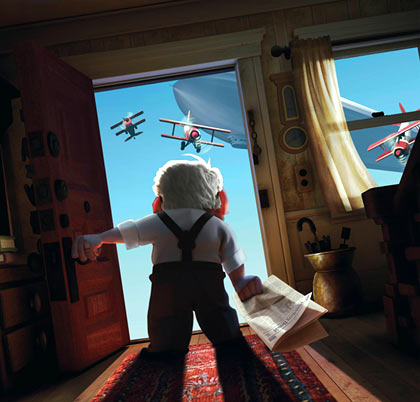

The Disney-Pixar Merger…Two Years Later

In yesterday’s NY Times there was a lengthy article about how things are going at Disney two years after its merger with Pixar. The Times’ opinion? Things are going pretty damn well. For anybody who has been following the companies closely, as I’m sure many Brew readers have, the Times piece offers little in the way of new information or insights, but it serves as a fairly good overview of what’s been happening during the past couple years.
There will be, I’m sure, the standard complaints of Lasseter and Co.’s continuation of Disney animation outsourcing and direct-to-video sequel productions, but perhaps the question should be asked, Was anybody so naive as to believe that either of these practices would come to a screeching halt when Pixar took over? The Disney corporation is far too big a machine to fuel itself solely on artistic integrity. The hope should rather be that Lasseter can balance the inevitable corporate shilling with enough artistic experimentation and new ideas to keep the Disney brand relevant in today’s entertainment world.
The jury is still out on whether he’ll be able to accomplish that at Disney. The studio’s first two Lasseter-era projects are questionable: a labored bid to repeat past glories (The Princess and the Frog) and a homely-looking deal with a dog and hamster. On the other hand, Pixar’s direction has never been more clear or promising. Pete Docter’s Up, the next feature from Emeryville following Wall-E, had me hooked from the very first image (posted at top). The film features an unlikely lead character, a stubby cane-wielding 78-year-old man, who travels the world by attaching helium-filled balloons to his house. It sounds like one of the most unconventional and interesting mainstream cartoon features in a long while.
Honestly, I believe that there’s too much baggage at Disney–in the form of Walt Disney and the legacy that he created–to allow for the Disney animators of today to produce anything of artistic merit. The studio is spinning its tires in Walt’s legacy, mired with the responsibility of maintaining the “integrity” of the Disney brand and simultaneously stunted with the fear of creating works that are “unDisney.” Disney, when it was actually run by Disney, defined the quality and innovation possible in the art form. That ship sailed over forty years ago and frankly, it’s time to get over it. The studio has been running on fumes for the better part of two decades, and coloring a princess a darker hue won’t alter a single thing, save for adding a few dollars to the value of shareholders’ stocks.
In tying the knot with Pixar, however, Disney can finally have its cake and eat it too. The Pixar brand is still young and malleable; it can be molded in wholly new creative directions like those of Wall-E and Up. Disney proper can continue exploiting its vast catalog of classics (bring on the Tinkerbell features) and perhaps add an occasional new character to the Disney patch (everybody loves a wacky hamster), while Pixar indulges in the risk-taking and innovation that is vital to the studio’s long-term health and reputation. It’s a shrewd bit of maneuvering, whether intended or not, for which Iger deserves a lot of credit. By purchasing Pixar, he assures that at least one part of Disney can live up to the company’s reputation for pushing the art of animation forward.

.png)